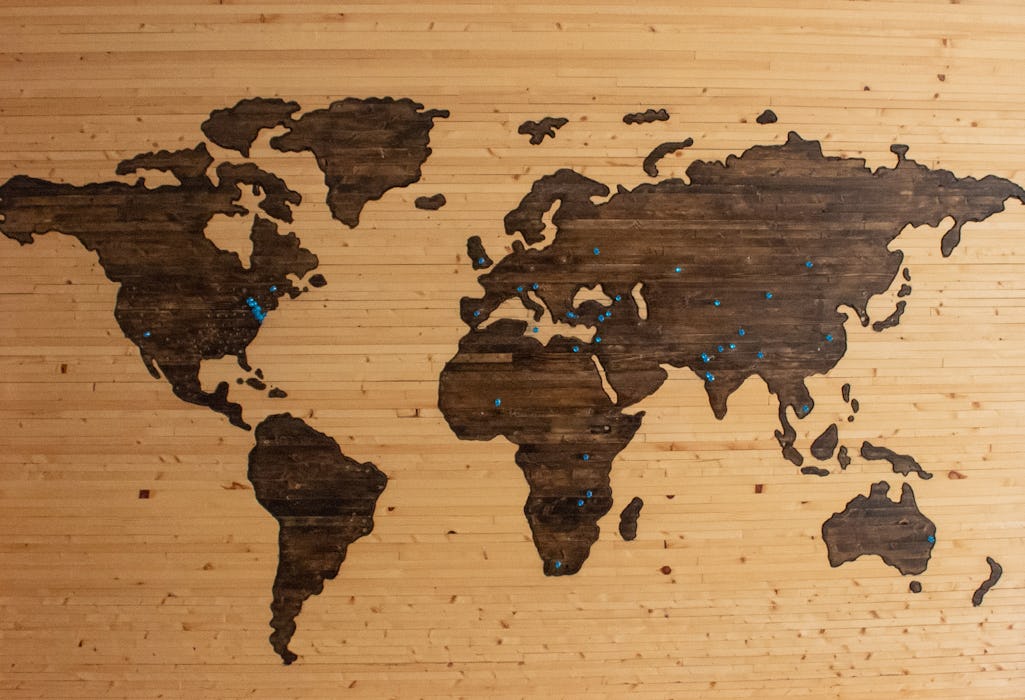Let us help you plan the perfect sailing trip
Provide your travel details, receive free offer and enjoy your holiday!
"Twenty years from now, you will be more disappointed by the things you didn't do than those you did. So throw off the bowlines. Sail away from safe harbor. Catch the wind in your sails. Explore. Dream. Discover."
-Mark Twain
In this modern-day and age, words by the famous American author Mark Twain hit closer to home than ever. Due to the nature and fast pace of our everyday lives, it is important to take some time for ourselves every once in a while and truly unwind. And there is no better escape from modern life than sailing the open seas and exploring the natural beauty of our breathtaking planet.
However, before you set sail, there are a few questions that need answering, and probably the most important one is - where do I want to sail?
If you are unsure of the answer or simply want to explore all the options first, here you can quickly learn everything you need to know before making a decision.
HighSails.com offers an extensive guide to top Mediterranean destinations like Croatia, Greece, Italy, Spain and Turkey
Below you can find out about the best locations for an unforgettable sailing holiday and why we think you should visit them.
Colourful Croatia
Sailing difficulty: Perfect for both beginners and experienced sailors.
Best time for sailing: All through summer, late spring and early autumn.
Beach to visit: Sakarun beach on Dugi Otok island
Specialty to try: Peka (roasted meat or fish with potatoes)
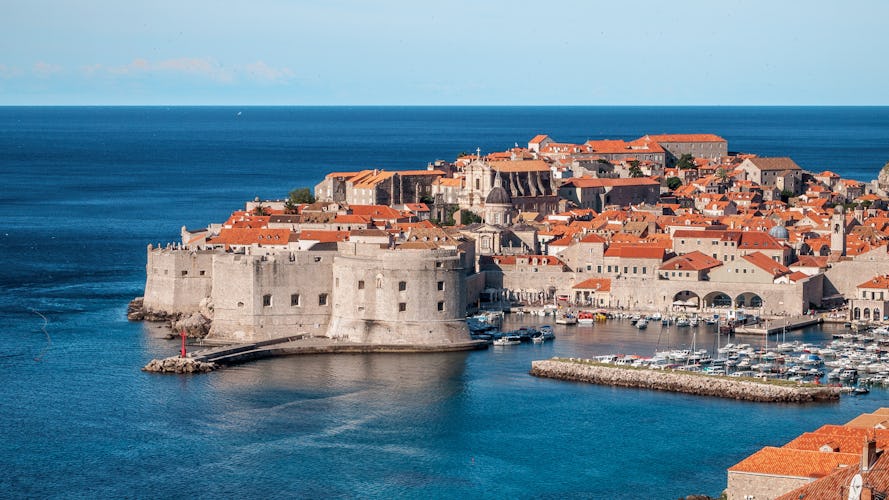
Croatia is known as the country of a thousand islands, spread across the beautiful and calm Adriatic sea. Croatia has become an increasingly popular destination among sailing enthusiasts in the last few years, offering an extensive network of marinas and a multitude of unforgettable destinations. The combination of warm weather, clear blue waters, impressive historical coastal cities and stunning island chains create a unique vacation experience, ideal for a sailing trip.
Visit some of the most popular Mediterranean destinations like Dubrovnik or Split and sail the magical Kornati archipelago, sampling delicious Croatian cuisine along the way.
Sailing in Croatia
Due to the geographical position of the Adriatic sea, which is engulfed by the Balkan and Italian (Apennine) peninsulas, sailing the Croatian coast is considered less challenging than sailing in other Mediterranean countries. There are no large waves on the Adriatic, and local winds like Mistral provide favourable sailing conditions. However be wary of the northern Bura wind, which can bring bad weather and rough sea!
Croatia has a long nautical tradition and boasts an extensive network of well-equipped marinas, located all along the coastline and offering adequate natural protection from the elements.
Parts of Croatia
Despite its small size, the Croatian coast offers plenty of diversity and varying landscapes. From the hills of the Istrian peninsula all the way to South Dalmatia, Croatia is full of surprises and unique experiences.
Istria & Kvarner
The Istrian peninsula is located on the northernmost part of the Croatian coast, bordering Slovenia and Italy. Istria is a region of immense cultural history, influenced by the ancient Romans and Venice. Visitors can explore ancient cities like Pula and enjoy the exquisite cuisine and quality wines of this famous region.
The Kvarner region is located east of Istria and is home to many charming islands like Krk, Cres, Rab and Lošinj.
Northern Dalmatia
Stretching from Kvarner to the city of Split, the Northern Dalmatia region encapsulates historical cities of Zadar, Biograd and Šibenik as well as numerous islands like Pag, Ugljan and Pašman. Here you can also explore some stunning national parks like the Paklenica National Park or the Krka National Park.
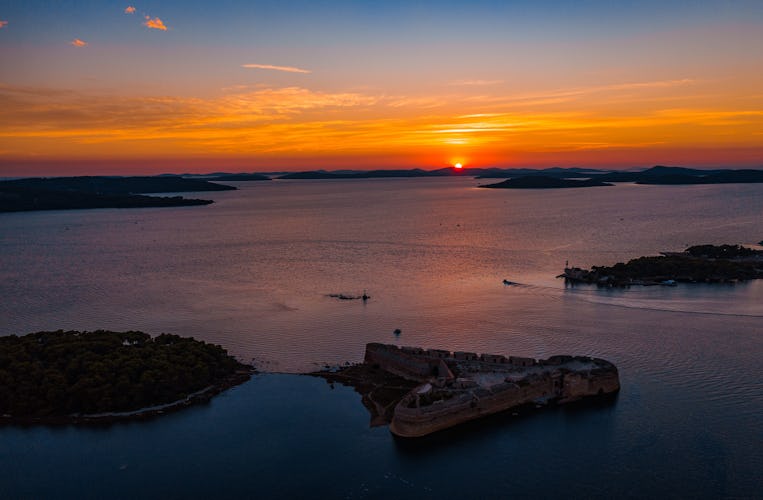
Kornati
The Kornati National Park is an archipelago consisting of 89 spectacular islands, often regarded as a "nautical paradise". As you sail your way through the cluster of islands, islets and reefs in the Kornati National Park, you will be greeted by spectacular sights of untouched nature and pristine sea.
Central Dalmatia
The region of Central Dalmatia is situated around the largest Croatian coastal city - Split. Those looking to soak up some culture and history should explore the city of Split, as well as the nearby town of Trogir, both included on the UNESCO list of World Heritage Sites.
The islands of Central Dalmatia like Hvar, Brač and Vis are among the most popular tourists and nautical destinations in Croatia, attracting large numbers of visitors with spectacular beaches, untouched nature and culinary delights.
South Dalmatia
The main attraction of the region of South Dalmatia is the historical city of Dubrovnik. Considered to be one of the most beautiful towns in Europe, Dubrovnik is famous for its city walls as well as the old town centre. Exploring the city's churches, palaces, monuments, monasteries and museums will make you fall in love with this magical town. There is lots more to see in Southern Dalmatia, like the Mljet National Park, the intoxicating island of Korčula or the charming Pelješac peninsula.
Graceful Greece
Sailing difficulty: Beginners can enjoy island-hopping and exploring the coast while experienced sailors can tackle the tricky Meltemi wind in the Dodecanese.
Best time for sailing: From mid-April until the end of October, depending on the region.
Beach to visit: Shipwreck Beach on the island of Zakynthos
Specialty to try: Moussaka (meat and vegetable casserole)
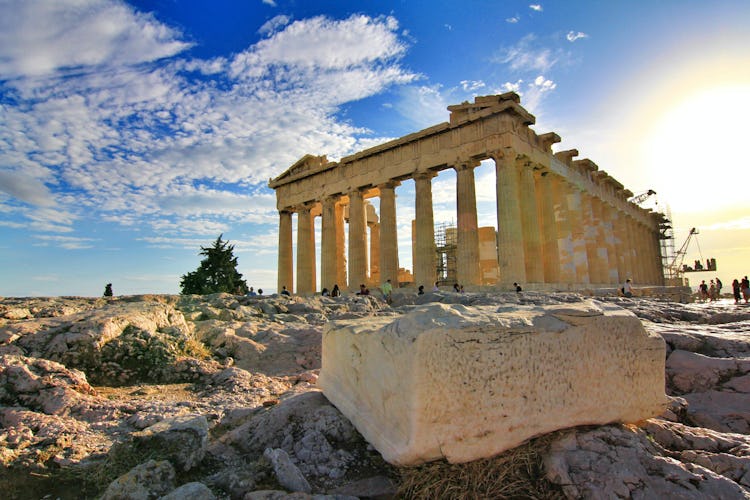
Greece is one of the most visited countries in Europe and among the most coveted nautical destinations in the world. Spread across over 3000 islands, you will find countless quaint fishing villages, secluded bays and some of the most spectacular beaches in Europe. Regarded as the cradle of Western civilisation, Greece will enchant you with its breathtaking cultural and historical landmarks. If you decide to have your sailing holiday in Greece, be sure to visit Athens - the best place to soak up the history and culture of this remarkable country.
Sailing in Greece
The sheer number of islands spread across a relatively small area makes Greece one of the most popular sailing destinations in the world. In combination with warm and sunny weather, beautiful beaches and stunning landscapes, it is no wonder that Greece is one of the top summer destinations in Europe.
Popular Greek islands like Rhodes, Corfu, Lefkada, Mykonos, Skiathos, Santorini and many others make for a difficult choice when deciding where to spend your sailing holidays.
Those less experienced can enjoy the Saronic Gulf and Ionian islands, where winds are weaker and the sea is calm. In contrast, sailing the Cyclades and the South Aegean requires some more nautical experience, as the summer meltemi winds in the region can get quite strong.
Parts of Greece
Located on the southern end of the Balkan peninsula, Greece offers mountainous interior, a wonderfully indented coastline and an abundance of spectacular islands nestled across several different island chains.
Ionian
The Ionian Islands are a group of islands in western Greece, consisting of seven larger islands and several smaller ones. The seven larger islands that belong to this cluster are Corfu, Paxos, Lefkada, Ithaca, Cephalonia, Zakynthos and Cythera.
Besides stunning beaches and untouched natural beauty, the Ionian islands are home to some stunning medieval and classical architecture due to the centuries-long Venetian rule of this region.
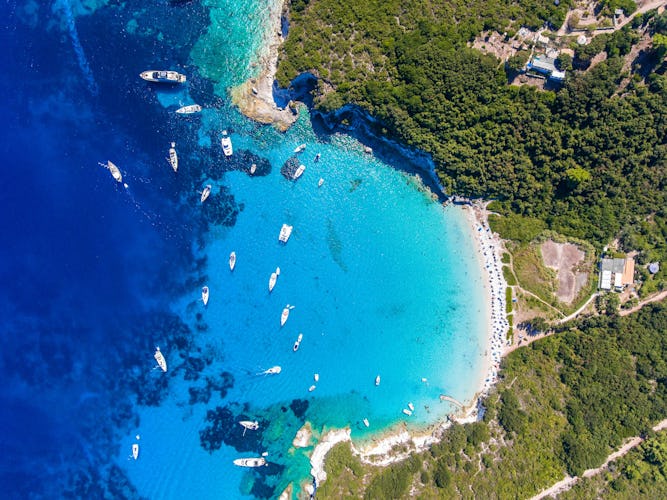
Saronic Gulf
The Saronic Gulf is situated between the peninsulas of Attica and Argolis and is a part of the Aegean Sea. The Saronic Gulf is dominated by the Greek capital of Athens and its port of Piraeus. Sailing is popular in the Saronic Gulf due to the fact that, like the neighbouring Argolic Gulf, it benefits from the Attic mainland's partial shelter from the summer Meltemi wind.The two most notable archaeological sites in the Saronic Gulf are the ancient theatre at Epidaurus and the Temple of Aphaia on Aegina.
Sporades
The Sporades are an archipelago in the Aegean Sea, situated along the eastern coast of Greece, northeast of the island of Euboea. The archipelago consists of 24 islands, four of which are permanently inhabited: Alonnisos, Skiathos, Skopelos and Skyros. The most popular island of the Sporades is Skiathos, attracting visitors with lush pine forests and crystal-clear waters.
North East Aegean
The North Aegean islands do not form a physical chain or group, but are frequently grouped together for administrative purposes. The most popular islands belonging to this cluster are Samos, Ikaria, Chios, Lesbos and Lemnos. You will find the Dodecanese islands to the south and Cyclades and Sporades island to the west of the North East Aegean islands.
Dodecanese
Located in the southeastern Aegean Sea, off the coast of Turkey's Anatolia, the Dodecanese are a group of 15 larger and some 150 smaller Greek islands. The dominant island of the group is Rhodes, a historical and cultural foothold in the area. Other prominent and popular islands in the group include Kos and Patmos, important tourist hubs that attract an increasing number of visitors each year.
Cyclades
The Cyclades are an island group in the Aegean Sea, southeast of the mainland of Greece. The largest island of the Cyclades is Naxos, however the most populated one is Syros. The Cyclades islands are recognisable for their architecture and vibrant colours with islands like Santorini, Mykonos and Milos attracting visitors with their stunning natural landscape, volcanic in origin.
Intoxicating Italy
Sailing difficulty: The Amalfi coast is ideal for beginners while experienced sailors will appreciate sailing the islands of Sardinia and Sicily.
Best time for sailing: Early May until the end of September.
Beach to visit: Marina Grande Beach, Positano.
Specialty to try: Any kind of risotto.

Italy is positioned centrally on the Mediterranean, occupying the entirety of the Apennine Peninsula. With over 7,500 km of coastline and two largest islands in the Mediterranean, Sardinia and Sicily, Italy is the nautical paradise you might be looking for. The combination of beautiful weather, stunning natural surroundings and historic cities make Italy among the top tourist destinations in the world. Add to that the famous Italian food, wine and relaxed atmosphere, you have all the makings of a memorable sailing trip.
Sailing in Italy
Due to its size, the Italian coast offers plenty of sailing routes for both the novices and those more experienced. If you are looking for a relaxing vacation coasting peacefully from port to port, then the Amalfi coast is a perfect choice. Those looking for a bit more challenge can try out sailing the open seas around Sicily or Sardinia. Weather in Italy is very diverse and changes with the terrain, with specific winds accompanying each region. Sailing the north of Italy, you will encounter the Tramontana, descending from the Alps. To the south, closer to Africa, you will encounter the Scirocco wind, bringing humid weather in the summer.
Italy has an extensive network of marinas, often located near big cities and popular tourist destinations. The most popular ones are located in the southern part of Italy, on the Amalfi coast and the islands of Sicily and Sardinia.
Parts of Italy
The boot-shaped Italian peninsula is one of the most recognisable geographical formations in the world. Italy' geography varies massively from the tall peaks of the Alps in the north all the way south to the sun-bathed shores of Sicily.
Liguria & Toscana
Located in northwestern Italy, the region of Liguria is encapsulated by the Alps and the Apennines mountain range. Liguria is bordered by France to the west and is adjacent to the spectacular region of Côte d'Azur. Coastal towns of Genoa and Portovenere are perfect sailing spots.
Tuscany (Toscana) is a famous region of Italy located just south of Liguria known for its stunning landscapes, history and artistic legacy. Florence, the capital of Tuscany, is home to several well-known museums such as the Uffizi and the Pitti Palace while Tuscan wines are known worldwide.
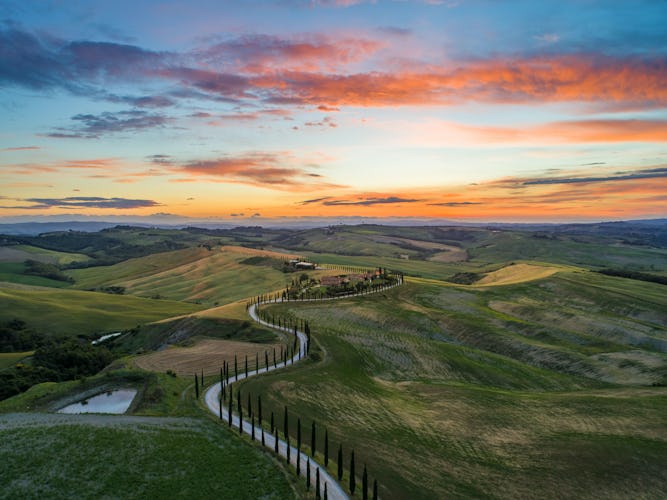
Italian Adriatic
The Adriatic Sea is the northernmost arm of the Mediterranean Sea and separates the Italian Peninsula from the Balkans. Although there are almost 1,300 islands in the Adriatic, almost all of them are on the eastern part, in Croatia. The most notable Italian cities on the Adriatic coast include Venice, Ancona, Pescara and Bari.
Ionian
The Ionian Sea is connected to the Adriatic Sea to the north, and touches Southern Italy, including Calabria and Sicily, and the west coast of Greece, including the Peloponnese.
All major islands in the sea, like Corfu, Kefalonia, Zakynthos, Lefkada, and Ithaca are located in the eastern part of the sea and belong to Greece.
Tyrrhenian Sea
The Tyrrhenian Sea is a part of the Mediterranean Sea off the western coast of Italy, spreading to the islands of Corsica and Sardinia to the west and the island of Sicily to the south. The most popular islands in the Tyrrhenian, attracting sailing enthusiasts from all over the world, include charming islands like Capri, Elba, Ischia and Ustica.
Sardinia & Corsica
Alongside Sicily, Sardinia and Corsica are the largest Mediterranean islands, home to some of the most beautiful beaches in Europe and among the top sailing destinations in the Mediterranean. The two islands are only 10 NM apart from each other, and both are a display of tranquillity among untouched natural beauty.
Sicily
The island of Sicily is the largest island in the Mediterranean Sea, located south of the Italian Peninsula, from which it is separated by the narrow Strait of Messina. The island is dominated by Mount Etna, the tallest active volcano in Europe which transformed the island into a lush oasis famous for its wines and good eating.

Stunning Spain
Sailing difficulty: The Spanish Meditteranean coast and Balearic islands are more suited for beginners, while the Atlantic coast and the Canary Islands are more suited for the more experienced.
Best time for sailing: Due to the location and subtropical climate, the Canary Islands can be sailed year-round. The best time to sail the Mediterranean coast is from spring until the end of autumn. Due to severe weather, the Atlantic coast on the north of Spain is best avoided after the end of September.
Beach to visit: Maspalomas, Gran Canaria
Specialty to try: Paella
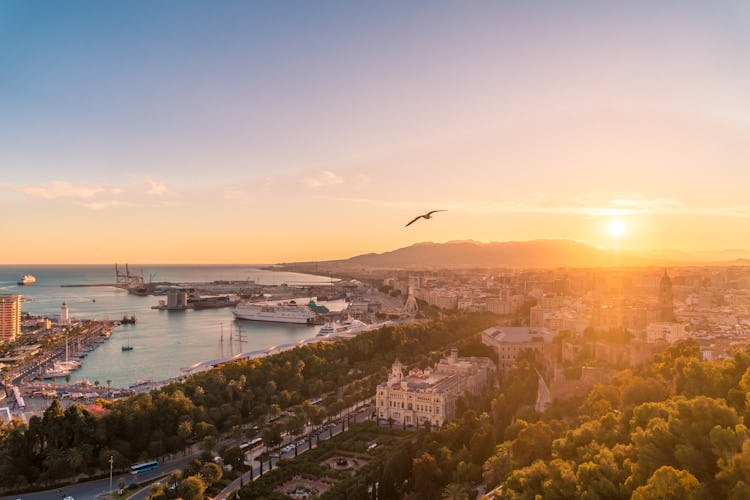
Located on the western side of the Mediterranean, Spain occupies the Iberian peninsula and is one of the most attractive tourist destinations in Europe. Beautiful landscapes, warm weather and an abundance of cultural heritage and history makes Spain an ideal vacation destination. In its history, Spain acted as a meeting point between Africa and Europe, and famously connected the Old World (Europe) with the New World (the Americas). Today, Spain is wonderfully diverse, becoming a melting pot of different cultures and traditions. Surrounded by an ocean and two different seas, Spain has a proud nautical tradition and is one of the most beautiful sailing destinations in Europe.
Sailing in Spain
Due to its territories off the coast of Africa (Canary islands), Spain is one of the more diverse sailing destinations in the world and can provide favourable sailing conditions year-round. The weather in Spain is relatively stable with plenty of sunshine and several different winds present, depending on the region you are in. Trade winds are present throughout the year, being the strongest during midday, and offer excellent sailing conditions. The most prevalent winds are Borrasca in northern Spain and the Mediterranean, Lebeche in southern Spain near Africa, and Tramontana that blows strongly over the Balearic Islands and some parts of Catalonia.
Sailing conditions are most favourable on the Spanish Mediterranean coast as the tidal ranges are small with waves ranging between 0.5 and 1.5 m.
On the other hand, sailing the Atlantic and Cantabric coasts is considerably more challenging due to bigger tidal ranges and significantly larger waves which can reach up to 10 meters during the winter months.
Parts of Spain
Spain has nearly 6,000 kilometres of coastline, which includes the country's mainland territories of the Iberian Peninsula, the Balearic Islands located in the Mediterranean, and the Canary Islands, situated 100 kilometres west of the coast of Morocco.
If you are looking to escape the cold winter months and remain in the EU, visiting the Canary Islands is the place to visit. Here you can enjoy ideal weather conditions even in the middle of winter with temperatures around 25 ºC with little to no rainfall.
Sailing the Spanish Mediterranean Coast and visiting the Balearic Islands offers the opportunity to discover the Spanish culture at its best, with historic regions such as Andalusia and Catalonia attracting large crowds of visitors year-round.
The Northern coast of Spain houses regions of Galicia, Asturias, Cantabria and the Basque Country, a wonderful collection of different cultures, beautiful green landscapes, and rich history.
Andalusia
The Spanish region of Andalusia is located on the southern end of the Iberian peninsula, opposite the African coast. It is the only European region with coastlines on both the Mediterranean and the Atlantic. Here you will also find the Strait of Gibraltar, a stunning gateway into the Mediterranean. Historic cities like Almeria, Cadiz, Cordoba, Granada, Málaga and Seville and among the most beautiful Spanish cities with impressive architecture and delicious cuisine.
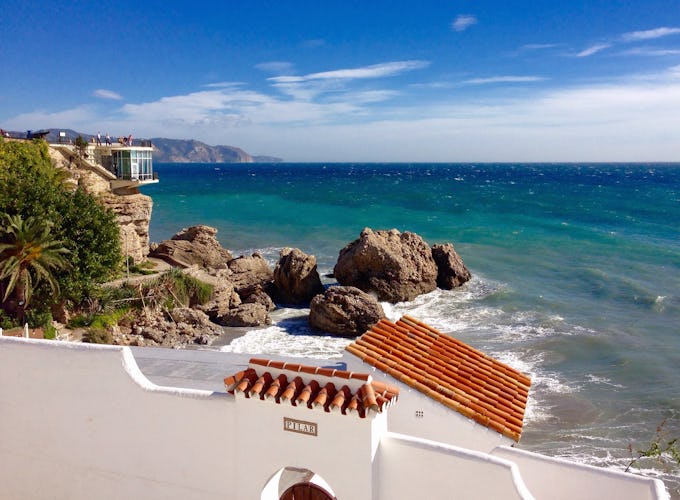
Balearic Islands
The Balearic Islands are located in the western Mediterranean Sea, off the eastern coast of the Iberian Peninsula. The archipelago consists of four larger islands including Mallorca, Menorca, Ibiza, and Formentera and several other smaller ones. These four larger ones, primarily Ibiza, are popular tourist and sailing destinations. Visitors from all over Europe flock to the popular resorts and nightclubs found on these islands.
Canary Islands
Located way out in the Atlantic ocean, about 100 km west off the coast of Morocco, the Canary Islands are the southernmost autonomous region of Spain. The main islands of the archipelago are Tenerife, Fuerteventura, Gran Canaria, Lanzarote, La Palma, La Gomera, El Hierro and La Graciosa. The warm climate and lack of rainfall attract visitors to the Canary islands year-round, while exploring the volcanic landscapes and beautiful vegetation of the archipelago is best done by sailing from island to island.
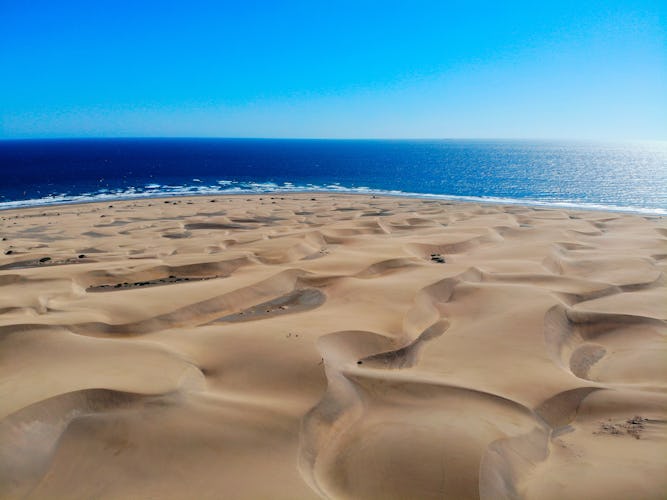
Catalonia
The Catalonia region is situated on the northeastern corner of Spain and the Mediterranean coast, bordering France to the north. The capital of the region is the coastal city of Barcelona, one of the sailing hubs on the Mediterranean coast in Spain. Barcelona is one of the most visited cities in Spain, attracting visitors with its unique architecture, impressive cultural landmarks and stunning beaches.
European Atlantic
Nestled on the Atlantic coast in the large Bay of Biscay, the northern Spanish regions like Asturias, Cantabria, Basque Country, and Galicia are among the most stunning parts of Spain offering lush greenery and beautiful coastal vistas. Due to the influence of the Atlantic ocean, the region is known for having some of the roughest weather in Europe during the winter.
Murcia
The Region of Murcia is located on the Mediterranean coast, in the southeastern part of the Iberian Peninsula. The capital of the region is the city of Murcia, an important university city rich with Moorish influence and beautiful architecture. It is also a popular sailing hotspot, attracting nautical enthusiasts to its coast with good sailing conditions and beautiful beaches.
Triumphant Turkey
Sailing difficulty: Favorable weather conditions and calm seas are ideal for both beginners and more skilled sailing enthusiasts.
Best time for sailing: From the beginning of spring until mid-autumn.
Beach to visit: Cleopatra's Beach, Alanya.
Specialty to try: Any kind of kebab.
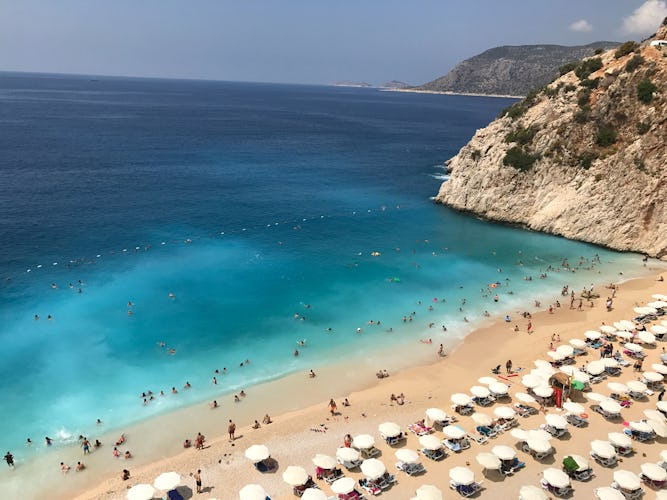
Positioned on the crossroads between Europe and Asia, Turkey occupies the Anatolian Peninsula, along with a smaller portion on the Balkan Peninsula. Turkey offers a stunningly indented coast, perfect for exploring its many secluded bays and gulfs. Combined with a rich history and the number of impressive historical landmarks scattered along the coast, sailing in Turkey is a unique experience every sailing enthusiast should try at least once. The proximity of Greek Dodecanese islands makes Turkey an ideal destination for a sailing tour of the eastern Mediterranean.
Sailing in Turkey
Due to its geographical position and fair weather, the sailing season in Turkey is usually a bit longer than the rest of the Mediterranean countries and can extend up until November. Sailing the Turkish coast, you will enjoy offshore north-westerly winds all season, with no significant tidal changes or strong currents. During the summer, sailing away from the Turkish coast, you will encounter the Meltemi wind, which picks up during midday, predominantly from the northwest. As the summers can get quite hot and dry, the best time for sailing the Turkish coast is either late spring or early autumn.
Parts of Turkey
Turkey is one the largest European countries, divided into seven distinct regions: Aegean, Black Sea, Central Anatolia, Eastern Anatolia, Marmara, Mediterranean and Southeastern Anatolia. Located in the Marmara region, where it connects Europe and Asia, Istanbul is one of the most significant cities in human history and the largest metropolitan area in Europe.
The capital of Turkey is Ankara, located in the heartland of Turkey, in the region of Central Anatolia. The Aegean and Mediterranean regions are ideal sailing destinations, with sailing hubs located in coastal cities of Izmir, Bodrum and Antalya.
Bodrum
Bodrum is a port city in the southwestern part of the Aegean region of Turkey. It sits on the southern coast of Bodrum Peninsula, not far from the Greek Dodecanese island chain. This important historic city was famous for hosting one of the Seven Wonders of the Ancient World - the Mausoleum of Halicarnassus. The beautiful harbour and the marina is overlooked by the 15th century Bodrum Castle, built by the Knights Hospitaller. Sailing from Bodrum to the Greek island of Kos takes under one hour and is one of the most popular charter spots in Turkey.
Izmir
The coastal city of Izmir is the third-largest Turkish city, behind Istanbul and Ankara. It is located on the Aegean Sea, on the western part of the Anatolia region. Izmir, also known as Smyrna, has more than 3,000 years of recorded history and was an important trade hub on the Mediterranean throughout its history. Due to its protected position at the end of a large and extremely indented bay, Izmir has a proud nautical tradition and is considered today one of the top sailing spots in Turkey.

Marmaris/Fethiye/Göcek
Marmaris is a popular tourist resort and a port city on the Mediterranean coast, not far from the city of Bodrum and is a part of the Turkish Riviera. Due to its stunning coastline and excellent weather conditions, Marmaris is a sailing and diving centre, housing two major and several smaller marinas.
Fethiye
Another tourist destination on the Turkish Riviera, Fethiye offers a winning combination of a beautiful coastline with stunning beaches and the impressive historical landmarks scattered across the city area. Fethiye is also among the top sailing destinations in Turkey, acting as an ideal starting spot to explore the Mediterranean.
Göcek
Another important spot on the Turkish Riviera is Göcek, a small town on the Mediterranean coast, not far from Fethiye. Here you will find no less than six marinas that act as a sailing hub for this part of the Turkish coast. The town is fully orientated towards tourism, offering all the necessary infrastructure and amenities you would expect from a tourist hub. On the other hand, due to a ban on multi-story buildings, the effect of mass tourism is not so obvious in Göcek so the town has a much more relaxed atmosphere than some other popular tourist destinations.
And there you have it, a brief insight into the best destinations for your sailing holidays. Now it is up to you to weigh all the options and choose one destination that is best suited for you. We at High Sails are confident that any destination you choose will offer you an unforgettable sailing vacation and be the first of many!
At the end of it all maybe it's best to remember these words by another famous American author:
"It is good to have an end to journey toward; but it is the journey that matters, in the end."
-Ernest Hemingway
Let us help you plan the perfect sailing trip
Provide your travel details, receive free offer and enjoy your holiday!
